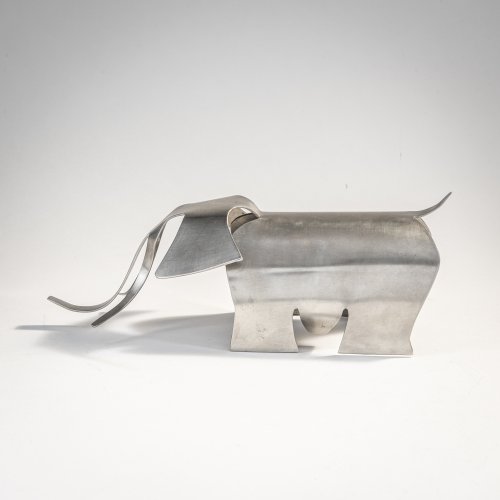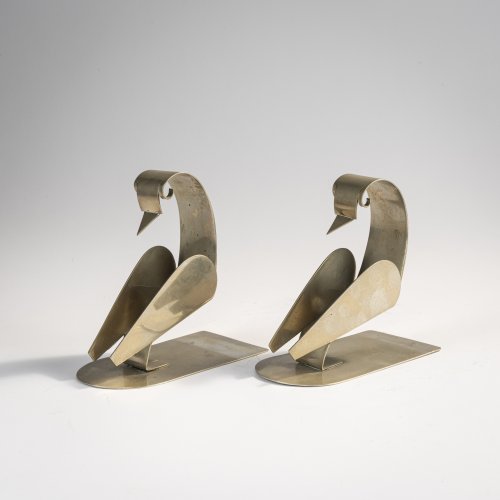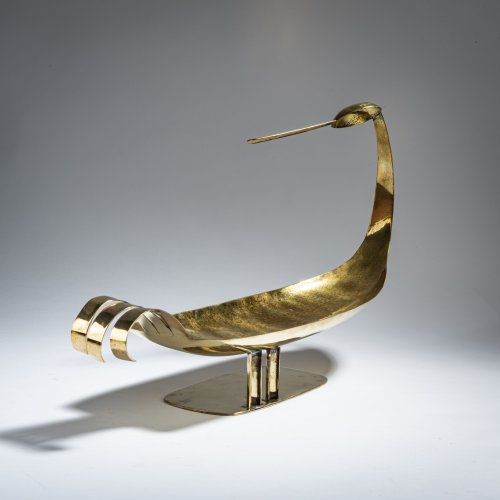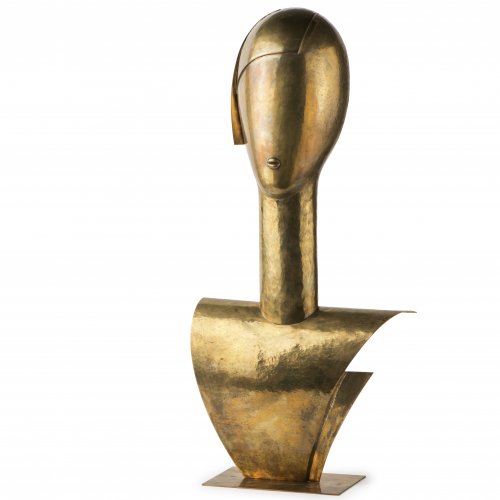Biography
Franz Hagenauer (Vienna 1906 - 1986 Vienna)
Franz Hagenauer was the younger brother of Karl Hagenauer, with whom he took over his father's workshop, founded in 1898, in the second generation. After Franz Hagenauer discovered his interest in artistic activities at the age of twelve during a youth course with Franz Cizek at the School of Arts and Crafts, he studied sculpture with Anton Hanak and metalwork with Josef Hoffmann at the same school from 1921. Over the course of his life, his artistic work increasingly focused on sculptural activities and his works, which were mostly made of sheet brass, as well as his expressive bronze torsos, can be attributed to great artistic skill. Similar to his brother's designs, a reduction of ornamentation and a focus on clear forms and contours became increasingly apparent. His teachers and fellow artists were also full of praise, with Josef Hoffmann, for example, saying that Franz Hagenauer was "technically and artistically extraordinarily gifted, extremely ambitious and inventive". For Fritz Wotruba, Franz Hagenauer had succeeded in "shaking off the petty-bourgeois Austrian folklore and freeing himself from the stylistic armor of his craft".
Thanks to numerous international commissions, the workshop was also very successful far beyond the borders of Europe. Early on, Franz Hagenauer provided designs for the Hagenauer Werkstätte and was represented at the Paris World Exhibition (1925) with works for the exhibition space. Franz Hagenauer became a member of the Kunstschau and took part in the Venice Biennale in 1934. After the war, the economic situation of the workshop changed, but it was able to survive with minor changes. The variety of materials was expanded and new motifs were created, some of them in wood. In 1950, Franz Hagenauer was awarded the Prize for Applied Arts of the City of Vienna. After the death of his brother Karl (1956), he took over the sole management of the company. One of his most important public works is the large federal eagle in the Austrian Parliament. In 1962, he became a professor at the Academy of Applied Arts, where he led the master class for free design in metal. One year after Franz Hagenauer's death (1986), the workshop was closed.
In addition to everyday objects such as ashtrays and vases etc., popular subjects in Franz Hagenauer's work include dynamic depictions of animals, elegant ladies' heads and African-inspired busts and figures. They are all of high decorative quality.
We regularly sell objects by Franz Hagenauer in our auctions. If you would like to sell your objects, our experts are always at your disposal.




